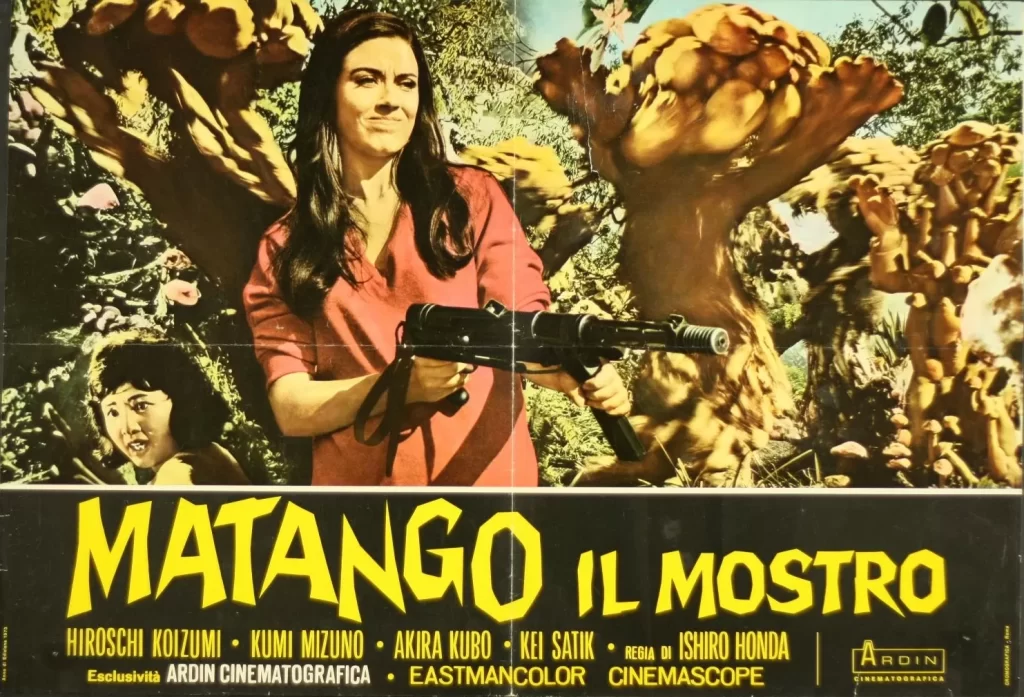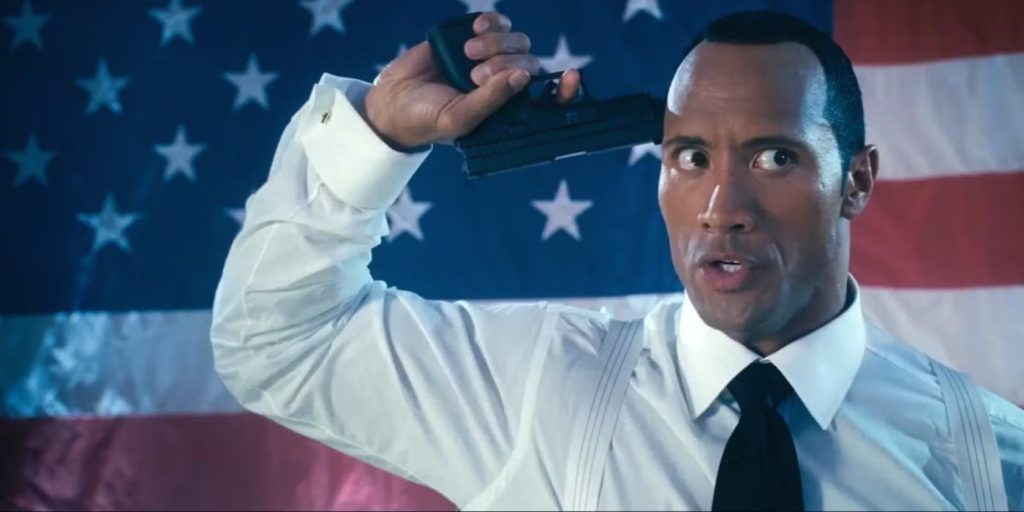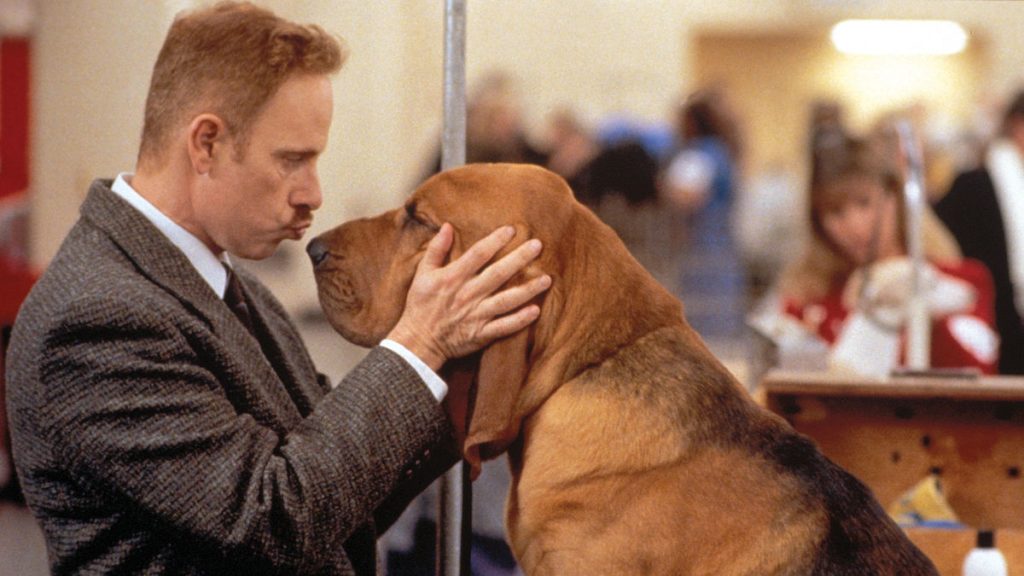Long before he corralled some of the screen’s most skilled improvisers to make such classic mockumentaries as Waiting for Guffman, Best in Show, and A Mighty Wind, Christopher Guest served his apprenticeship as a performer with the National Lampoon. As the magazine branched out into other media in the early ’70s, Guest did double duty by appearing in the cast of the stage show Lemmings (which took satirical aim at Woodstock) and performing songs and sketches for The National Lampoon Radio Hour. It was on the latter that he honed his method of improvising while tape rolled (most famously as the spaced-out Flash Bazbo, Space Explorer), generating a mountain of material which was then pared down to keep only the most inspired flights of lunacy.
The following decade, Guest put this principle to work in This Is Spinal Tap, a group effort with fellow actor/musicians Michael McKean and Harry Shearer, plus actor/director Rob Reiner, making his feature debut. Together, they conjured up a past-its-prime British metal act and sent it on a shambolic tour of the United States, during which the band collapses under its own weightlessness. That Guest, McKean, and Shearer periodically bring Spinal Tap out of retirement is a testament to its longevity, but on its initial release This Is Spinal Tap was not the runaway success its reputation would suggest. Had it been, Guest may have been able to write his own ticket. Instead, he wrote (with Michael Varhol, co-writer of Pee-Wee’s Big Adventure) the story for his own directorial debut, The Big Picture.
“I thought your film had a very special quality. Very unique.”
Released 30 years ago this month, The Big Picture was an attempt to be to Hollywood what This Is Spinal Tap was to rock ’n’ roll. Rather than star in it himself, though, Guest cast Kevin Bacon as naïve film-school graduate Nick Chapman, whose idealism and sense of purpose are methodically chipped away as he jumps through the hoops required to get his passion project off the ground. With only an award-winning student short to his name – for which he receives scads of praise from industry types who haven’t seen it – Nick is at the mercy of mercurial studio heads, inattentive agents, and ambitious starlets, as well as the capricious nature of Hollywood itself.
From the start, Guest relies on Nick’s overactive imagination to jazz up the proceedings, riffing on different genres as he fantasizes about the turns his budding career takes under the wing of eccentric studio exec Allen Habel (J.T. Walsh). An inveterate meddler, Allen warps Nick’s somber relationship drama – moving the setting from a country house in winter to the beach in summer, aging down the characters, insisting on no more than 15 to 20 pop hits on the soundtrack – until it’s unrecognizable. The further away the film gets from Nick’s original vision (which is in black-and-white, naturally), the more outlandish it gets, but for the most part The Big Picture stays as grounded as Bacon’s earnest performance, which is matched by Emily Longstreth’s as Nick’s girlfriend Susan, who watches from the sidelines as he allows himself to be seduced and starts believing his own hype. He even throws over his friend and cinematographer Emmet (Michael McKean, who shares screenplay credit with Guest and Varhol) for the chance to work with legendary DP Andres Vargiak (the film’s László Kovács/Vilmos Zsigmond equivalent). It’s only after the plug gets pulled and he’s brought back down to Earth that Nick remembers why he wanted to make movies in the first place – and who’s been in his corner all along.
One of those people is fellow National Film Institute alum Lydia (Jennifer Jason Leigh), the personification of the “arty” film-school student who hooks Nick up with an unsigned band interested in making a music video (for a catchy song entitled “The Whites of Their Eyes,” written and performed by Guest and McKean). As studiously offbeat as Lydia is, though, she still exists on the same plane of reality as Nick, something that cannot be said for his flaky agent Neil, a role Martin Short grabs by the horns and runs with, creating one of the film’s most memorable characters.
The rest of the cast is dotted with cameos by the likes of Eddie Albert, Richard Belzer, June Lockhart, and Roddy McDowell as themselves (shades of Robert Altman’s The Player), with plum roles for John Cleese (as the bartender in Nick’s It’s a Wonderful Life-inspired fantasy) and Fran Drescher (a holdover from This Is Spinal Tap drafted to play Allen’s current wife). And prefiguring Tim Burton’s Ed Wood is the scene where Nick takes his orphaned script – which has mutated into an unsellable abomination called Beach Nuts – to a crass independent producer who turns it down flat, proposing in its place the can’t-miss market-research-approved Abe and the Babe, an ahistorical buddy picture for Abraham Lincoln and Babe Ruth. Desperate as he may be to make a movie – any movie – Nick wisely chooses to bide his time just a little longer.
“Prepare your minds for a new scale of experience.”
A few years after The Big Picture came and went (it opened on three screens on Sept. 15, 1989, and played on all of eight at its widest release), Guest turned his attention to Attack of the 50 Ft. Woman, a remake of the ’50s science-fiction “classic” that premiered on HBO in 1993. Refashioned by screenwriter Joseph Dougherty (best known for the Lovecraftian noir Cast a Deadly Spell, also made for HBO) as a feminist parable, the film stars Daryl Hannah as Nancy Archer, a perpetually put-upon housewife who discovers an untapped wellspring of power that has been trapped within her by her overbearing father and deceitful husband. It’s only after she’s zapped by aliens and grows to the point where she literally towers over them that she comes into her own as a person.
In spite of its inherently outlandish premise, Guest’s Attack plays things fairly straight in the early going. Fifteen minutes elapse before Nancy has her first alien encounter, and she doesn’t begin growing until the halfway point, giving her cheating husband Harry (Daniel Baldwin, who sounds disconcertingly like his more famous brother) plenty of time to openly question her sanity and attempt to have her committed so he can take control of her inheritance. Instead, most of the jokes are in the production design, like the drive-in theater that pairs up different films with The Adventures of Milo and Otis. (First it’s Night of the Car Wash Girls. Later it’s Yentl.)
Attack’s main legacy in Guest’s film canon is that it reunited him with actor Paul Benedict (the hotel clerk from This Is Spinal Tap), who plays a doctor hired to take care of Nancy (and who gets the requisite scene with an enormous hypodermic), and introduced him to Lewis Arquette, who has a small part as a local business owner and went on to play the narrator of Red, White & Blaine in his next film, 1996’s Waiting for Guffman.
“Good Lord, must you and the others reduce everything to its crudest terms?”
Before tackling that, though, a few words about Guest’s final scripted feature to date, Almost Heroes: It’s terrible and terribly unfunny. Unless 90 minutes of Chris Farley bellowing at the top of his lungs and Matthew Perry acting like a prig is your idea of a good time, avoid at all costs. Guest’s comedy encompasses many things, but it is rarely scatological, and yet there is an entire scene in Almost Heroes (for which Guest can’t take too much blame since the script is credited to three other people) built around a belabored story one of the men in Perry’s party tells about eating animal feces. Absurdities like men jumping at the chance to have sex with straw-filled women (stuffed with pride by Lewis Arquette’s enterprising trading post merchant) or Kevin Dunn’s role as a haughty conquistador obsessed with his hair are more in Guest’s wheelhouse, but these are outliers in a leaden affair that leans hard on Farley’s ungainly pratfalls and Perry’s unworldly dandy routine. Even worse, the film wastes Eugene Levy as a fraudulent French interpreter whose default mode is insane jealousy around his Native American wife. That’s a character trait he and Guest would return to in 2000’s Best in Show, in which Levy gets hot under the collar whenever anybody references his wife’s sexpot past, but at least he gets other notes to play.
“It’s like in a Hitchcock movie, you know, where they tie you up in a rubber bag and throw you in the trunk of a car. You find people.”
While Almost Heroes represents the nadir of Guest’s directing career (his widest release, opening on more than 2000 screens a scant five months after Farley’s untimely death, it barely made $6 million domestically in the spring of 1998), Waiting for Guffman was the turning point, the prototype for what audiences think of as a “Christopher Guest film.” It’s also the first of his films he elected to appear in, a sure sign of how close he felt to the material. Shot in Super 16 (like This Is Spinal Tap before it) and completely improvised by the cast based on a plot outline and characters developed by Guest and Levy (their first of four such collaborations), Guffman was the ideal vehicle for the flamboyant Corky St. Clair, whose musical salute to the town of Blaine, Mo., on the occasion of its sesquicentennial has certain parallels with Nick Chapman’s quixotic Hollywood adventure.
Much like Nick dreams of making a Hollywood movie, Corky’s ultimate goal is to make it to Broadway. That he believes Red, White & Blaine is his ticket there demonstrates the extent of his self-delusion, and his announcement to his cast that they “may be going to Broadway” just because one of the talent agencies he sent an invitation to has said they’re sending a representative is premature at best. When the Blaine city council balks at kicking in $100,000 for the production, Corky quits in a huff and the show appears to be dead since the cast (which includes Guest regulars Eugene Levy, Catherine O’Hara, Parker Posey, and Fred Willard) can’t fathom working with Bob Balaban’s persnickety music director. Corky’s time in the wilderness doesn’t last as long as Nick’s, though, since he’s given an ego boost by the mayor that is on par with the shot in the arm Nick’s floundering career gets when his music video makes him a hot property again.
The difference is while Red, White & Blaine goes off without too many hitches (the biggest one being Corky’s substitution for the show’s young lead, who drops out at the last minute), the audience member they believe to be Guffman (Paul Benedict again) turns out to be someone else entirely. This sets the stage for the requisite “Three Months Later” epilogue, which would become a standard ingredient in the Guest/Levy recipe all the way through 2006’s For Your Consideration, Guest’s last theatrical release to date. Since then, he’s made a series for HBO (2013’s Family Tree) and the Netflix original film Mascots, for which he brought back Corky St. Clair for an encore, bringing everything full circle. Whether he has another film in him, unscripted or otherwise, remains to be seen.





